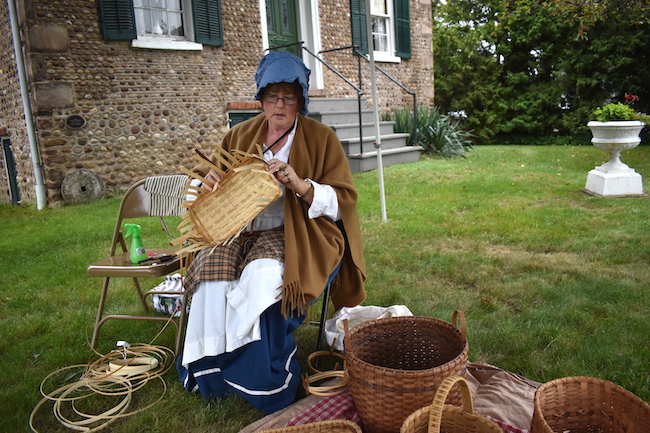Cobblestone Museum puts old-time artisans on display at annual open house
Photos by Tom Rivers
GAINES – Leo LeBerth, left, and Matt Holland work in the blacksmith shop on Saturday during the annual open house at the Cobblestone Museum.
This was the first time both men volunteered in the blacksmith shop at the museum. LeBerth has his own setup in Ridgeway. Holland is a member of the Cobbelstone Museum’s board of directors. He has been a blacksmith demonstrator before at another museum.
The blacksmith shop used to be operated by Joseph Vagg. The original shop burned down in 1921 but was rebuilt in 1922 with the help of many local farmers who were served by Vagg.
Eliya Cooper of Hamlin gave tours of the Vagg House, which is next door to the blacksmith shop. The Vagg house was added to the museum in 2019. It is decorated to be a typical of a middle class 1930s home when electricity became more common.
Joseph Vagg and his with Nellie lived in the house. Nellie was very active in the temperance movement. She died in 1975 and donated the blacksmith shop and its tools to the Cobblestone Society.
Cooper has been volunteering at the museum as a docent for eight seasons.
LeRoy Neeper of Medina demonstrates equipment in the wood shop next to the blacksmith. The wood shop includes a band saw, wood saws, drill press lathe and an International Harvester engine from 1922.
Jan Brauer of Lewiston weaves a basket outside the Ward House. Brauer has been a basket weaver since 2002.
“It’s very meditative,” she said. “And it’s a useful craft that you can put your stuff in.”
Cat Holland of Medina, left, and Sylvia Goodstine of Kent gave turs of the Ward House which was constructed in about 1840 in the Federal style.
Holland said her favorite artifact in the house is a horsehair couch. Goodstine said she most enjoys a Wheeler & Wilson sewing machine from 1863.
Reuben Rivers chats with Georgia Thomas and Maarit Vaga. Rivers gave tours of the Farmer’s Hall, while Thomas did a butter-making demonstration and Vaga showed the harness shop next door.
The Farmer’s Hall was built in 1855 as a Universalist Church. It was then used by German Lutherans as a church beginning in the 1870s. It later became Kendall’s Town Hall. The building was given to the Cobblestone Museum in 1978. It was dismantled in Kendall and brought to the museum where it was rebuilt and now functions as an exhibition hall for 19th and early 20th century farming implements.
The museum’s entire campus was open for tours on Saturday. The event concluded with a concert in the Cobblestone Church by the Fiddlers of the Genesee.












































































